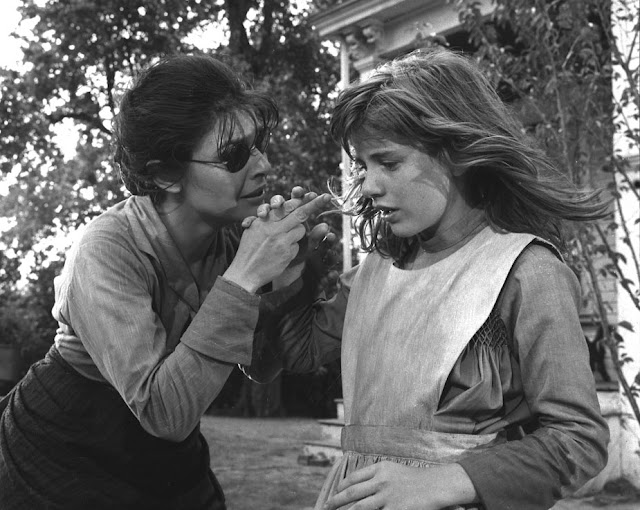This post is sponsored by DVD Netflix
"What's the matter with you? Don't you know who I used to be?"
Once celebrated film director Mel Funn is working on his comeback project. With the help of his best buds Marty Eggs (Marty Feldman) and Dom Bell (Dom DeLuise) they set out to make his dream happen. The trio stop by Big Pictures Studios to meet with the Studio Chief (Sid Caesar). Rival studio, Engulf and Devour, run by Engulf (Harold Gould) and Devour (Ron Carey), wants to put Big Picture Studios out of business. Funn offers Studio Chief his idea to save the company: the first silent movie made in over forty years. What could go wrong? With Studio Chief in the hospital, Funn and his crew set out on an adventure to get the biggest stars to be in their picture.
Silent Movie (1976) pokes fun at the film industry while paying homage to the silent films that started it all. This backstage comedy is 99.9% silent. Only one word is uttered and of course the actor to speak it is renowned mime Marcel Marceau. Because why not? Silent Movie is filled with hilarious gags, physical comedy that will leave you in stitches. It has one of the best line-ups of guest stars of any movie. In addition to Marceau, the comic trio recruit Burt Reynolds, James Caan, Liza Minnelli, Anne Bancroft (Mel Brooks' wife) and Paul Newman. Each cameo comes with its own highly entertaining comedy sequence. My favorite one was with Liza Minnelli. Brooks, Feldman and DeLuise dress up in suits of armor and enter the studio commissary where Minnelli has lunch. The trio don't know how to move gracefully in their clunky armor and chaos inevitably ensues. I watched that one scene four times before I could even move on to the rest of the film. It's that good.


On the heels of the success of Blazing Saddles (1974), his homage to Westerns, and Young Frankenstein (1974), his homage to classic horror, Brooks was in a position to tackle another genre, one near and dear to his heart.
"I never cared about religion, but I prayed to silent movies. It was my contact with things soulful. I'd go [to the silent movie theater] as often as I could." - Mel Brooks
According to Brooks biographer Dale Sherman (Mel Brooks FAQ), the idea came from writer Ron Clark who presented it to Brooks at a party. Brooks wasn't so sure about Clark's idea. How would a silent movie appeal to a modern audience? According to Sherman, Clark suggested "a movie in color, set in the current time, with all the modern camera techniques available, and with big movie stars... but without sound."
Brooks worked with Clark on the script and added his previous collaborators Rudy De Luca and Barry Levinson to the project. 20th Century Fox was on board with the idea, thanks to the nostalgia boom of the 1960s nad '70s and Brooks' recent box office success. However, just to be safe, the studio wanted Brooks to record sound. Just in case the whole silent movie aspect didn't pan out. But Brooks was confident it would work. The only sound added was Marceau's single word of dialogue, John Morris' score and synchronized sound for the various gags.
Then there was the cast. DeLuise and Feldman, Brooks' co-stars, were on board early on. Bernadette Peters, who plays Brooks' love interest, replaced Madeline Kahn who had to drop out. Then there were the guest stars. Brooks couldn't offer them much money. However, it wasn't a lot of work and it was a great opportunity to be featured in a movie poised for box office success. Caan, Reynolds, Minnelli and others agreed because who wouldn't want to work with Brooks circa 1976? Steve McQueen wanted the Paul Newman part but when he heard it was taken and that his friendly screen rival would be in the picture, he bowed out.
Silent Movie was made for $4 million and grossed over $36 million. It got mixed reviews but a lot of laughs.
Disclaimer: As a DVD Nation director, I earn rewards from DVD Netflix. You can rent Silent Movie on DVD.com.






















